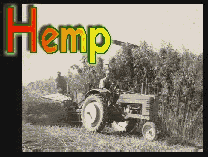Jim Finnel
Fallen Cannabis Warrior & Ex News Moderator
Organic Compounds in the Environment
Summer Cover Crops Reduce Atrazine Leaching to Shallow Groundwater in Southern Florida
Thomas L. Pottera,*, David D. Boscha, Hyun Joob, Bruce Schafferc and Rafael Muñoz-Carpenad
a USDA-ARS, Southeast Watershed Research Lab., P.O. Box 748, Tifton, GA 31793
b Dep. of Environmental and Molecular Toxicology, North Carolina State Univ., Raleigh, NC
c Tropical Research and Education Center, Univ. of Florida, Homestead, FL 33031
d Dep. of Agricultural and Biological Engineering, Univ. of Florida, Gainesville, FL. Mention of trade names or commercial products is solely for the purpose of providing specific information and does not imply recommendation or endorsement by the U.S. Department of Agriculture
* Corresponding author (tom.potter@ars.usda.gov).
Received for publication December 6, 2006. At Florida's southeastern tip, sweet corn (Zea Mays) is grown commercially during winter months. Most fields are treated with atrazine (6-chloro-N-ethyl-N'-[1-methylethyl]-1,3,5-triazine-2,4-diamine). Hydrogeologic conditions indicate a potential for shallow groundwater contamination. This was investigated by measuring the parent compound and three degradates—DEA (6-chloro-N-[1-methylethyl]-1,3,5-triazine-2,4-diamine), DIA (6-chloro-N-ethyl)-1,3,5-triazine-2,4-diamine, and HA (6-hydroxy-N-[1-methylethyl]-1,3,5-triazine-2,4-diamine)—in water samples collected beneath sweet corn plots treated annually with the herbicide. During the study, a potential mitigation measure (i.e., the use of a cover crop, Sunn Hemp [Crotalaria juncea L.], during summer fallow periods followed by chopping and turning the crop into soil before planting the next crop) was evaluated. Over 3.5 yr and production of four corn crops, groundwater monitoring indicated leaching of atrazine, DIA, and DEA, with DEA accounting for more than half of all residues in most samples. Predominance of DEA, which increased after the second atrazine application, was interpreted as an indication of rapid and extensive atrazine degradation in soil and indicated that an adapted community of atrazine degrading organisms had developed. A companion laboratory study found a sixfold increase in atrazine degradation rate in soil after three applications. Groundwater data also revealed that atrazine and degradates concentrations were significantly lower in samples collected beneath cover crop plots when compared with concentrations below fallow plots. Together, these findings demonstrated a relatively small although potentially significant risk for leaching of atrazine and its dealkylated degradates to groundwater and that the use of a cover crop like Sunn Hemp during summer months may be an effective mitigation measure.
Abbreviations: COV, cover crop • CT, chlorotriazines • DACT, diaminochlorotriazine • DEA, desethylatrazine • DGRD, downgradient • DIA, desisopropylatrazine • ET, evapotranspiration • HA, hydroxyatrazine • LTA, long-term average • MCL, maximum contaminant level • MDL, method detection limit • MS, mass spectrometry • NOCOV, no cover crop • t1/2, soil half-life • UGRD, upgradient

Summer Cover Crops Reduce Atrazine Leaching to Shallow Groundwater in Southern Florida
Thomas L. Pottera,*, David D. Boscha, Hyun Joob, Bruce Schafferc and Rafael Muñoz-Carpenad
a USDA-ARS, Southeast Watershed Research Lab., P.O. Box 748, Tifton, GA 31793
b Dep. of Environmental and Molecular Toxicology, North Carolina State Univ., Raleigh, NC
c Tropical Research and Education Center, Univ. of Florida, Homestead, FL 33031
d Dep. of Agricultural and Biological Engineering, Univ. of Florida, Gainesville, FL. Mention of trade names or commercial products is solely for the purpose of providing specific information and does not imply recommendation or endorsement by the U.S. Department of Agriculture
* Corresponding author (tom.potter@ars.usda.gov).
Received for publication December 6, 2006. At Florida's southeastern tip, sweet corn (Zea Mays) is grown commercially during winter months. Most fields are treated with atrazine (6-chloro-N-ethyl-N'-[1-methylethyl]-1,3,5-triazine-2,4-diamine). Hydrogeologic conditions indicate a potential for shallow groundwater contamination. This was investigated by measuring the parent compound and three degradates—DEA (6-chloro-N-[1-methylethyl]-1,3,5-triazine-2,4-diamine), DIA (6-chloro-N-ethyl)-1,3,5-triazine-2,4-diamine, and HA (6-hydroxy-N-[1-methylethyl]-1,3,5-triazine-2,4-diamine)—in water samples collected beneath sweet corn plots treated annually with the herbicide. During the study, a potential mitigation measure (i.e., the use of a cover crop, Sunn Hemp [Crotalaria juncea L.], during summer fallow periods followed by chopping and turning the crop into soil before planting the next crop) was evaluated. Over 3.5 yr and production of four corn crops, groundwater monitoring indicated leaching of atrazine, DIA, and DEA, with DEA accounting for more than half of all residues in most samples. Predominance of DEA, which increased after the second atrazine application, was interpreted as an indication of rapid and extensive atrazine degradation in soil and indicated that an adapted community of atrazine degrading organisms had developed. A companion laboratory study found a sixfold increase in atrazine degradation rate in soil after three applications. Groundwater data also revealed that atrazine and degradates concentrations were significantly lower in samples collected beneath cover crop plots when compared with concentrations below fallow plots. Together, these findings demonstrated a relatively small although potentially significant risk for leaching of atrazine and its dealkylated degradates to groundwater and that the use of a cover crop like Sunn Hemp during summer months may be an effective mitigation measure.
Abbreviations: COV, cover crop • CT, chlorotriazines • DACT, diaminochlorotriazine • DEA, desethylatrazine • DGRD, downgradient • DIA, desisopropylatrazine • ET, evapotranspiration • HA, hydroxyatrazine • LTA, long-term average • MCL, maximum contaminant level • MDL, method detection limit • MS, mass spectrometry • NOCOV, no cover crop • t1/2, soil half-life • UGRD, upgradient



